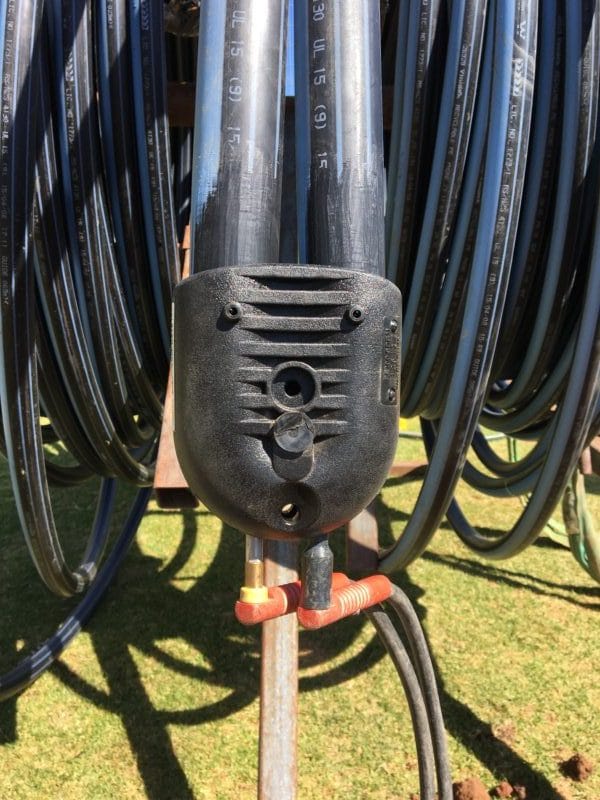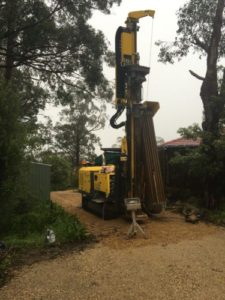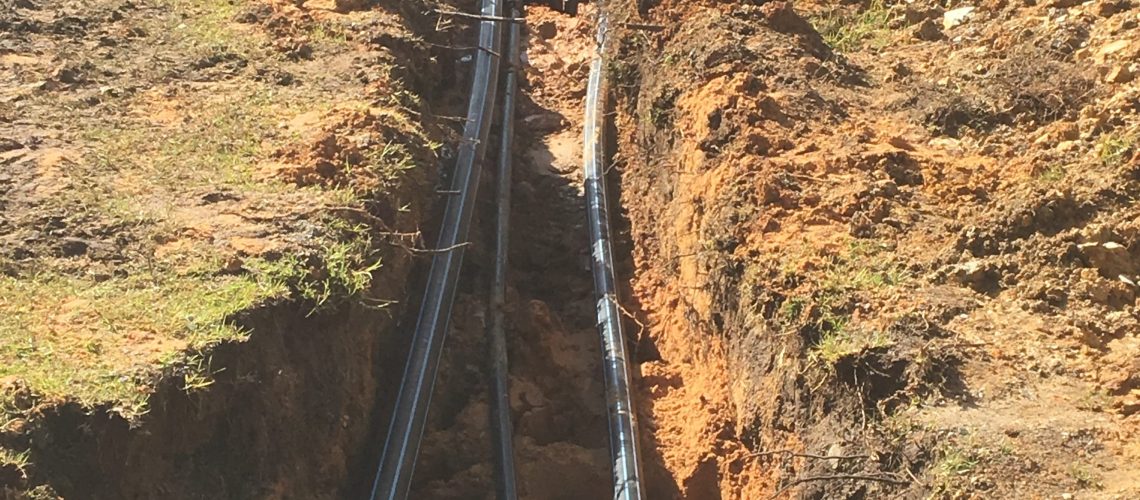Did you know the Earth below our feet sits at a near stable temperature all year round?
Have you ever been down in a cave or in a wine cellar below the ground? Have you noticed that the temperature in these areas is very stable. Once we go down about 1.5m and up about to about 120m deep the temperature of the Earth stays relatively the same. In fact around Adelaide we expect to see ground temperatures between 16 to 19 deg c. To utilise the stable temperatures of the Earth for heating and cooling in a Geoexchange system we install what is referred to as ground loops.
What are Ground Loops
A ground loop consists of a series of pipes that are either installed horizontally in a trench (about 1.5m deep) or installed in a vertical bore hole (between 50m to 120m deep). The length, depth or size of the loop needed for a Geoexchange system is based on the heating and cooling load for the space the system is serving. There is no rule of thumb for working out how much loop will be required for a system, for this task we use a software system that takes into account the climate data for your area, the equipment to be installed and the heating and cooling loads for the home or building. The Loop is utilised by pumping a fluid (water and antifreeze) around inside the pipework which either carries heat into the ground for heat rejection when cooling is required or in the reverse absorbs heat when heating is required.
What causes the Earth to be like this?
There has been a lot of interest over the last few years in regards to Geothermal energy. This energy though is deep down and is generated by the core temperatures of the earth. With Geoexchange heating and cooling systems the loops are only installed in what we refer to as shallow ground (in the top 120m). The difference between the deep earth temperature caused by the core temperature and the shallow earth temperatures is that the stable temperatures in the ground at a shallow level is stored Solar Energy. So in actually fact we are using the Earth like a big thermal battery that is charged by the sun.
The Pipework
For the Geoexchange ground loops we install on our projects you will find us using a high-density polyethylene pipe(HDPE). HDPE pipe is widely used in a number of industries these days eg. Gas and Water mains distribution systems due to the fact it is tough, does not corrode and isn’t affected by any chemicals normally found in soil that copper or steel pipes can be affected by. A properly installed ground loop is expected to last well beyond the life expectancy of your home.
Joining the pipework
To join HDPE pipe the fittings we use are referred to as electrofusion fittings. The fittings have a coil of wire inside them that when the correct current is passed through it melts (fuses) the pipe and fitting together. Once this process has taken place the fitting is left to cool down as per the manufacturer’s instruction.

Geoexchange ground loop Ubend being fusion welded to pipe prior to being installed in the vertical bore.
Vertical Loop Installation
To undertake the installation of a vertical loop system we require the help of a special drill rig. The size of the hole drilled in the Earth is about 115mm in diameter and as mentioned earlier anywhere from 50 to 120 meters deep. Once the hole is drilled and the drill is retracted the HDPE pipe can be fed into the hole. In each hole there is two HDPE pipes that are joined at the bottom with a special U-Bend that is electrofused onto the two pipes and tested prior to being lowered into the hole. The two pipes create a circuit for fluid to pass through (down one side and up the other). After the loop is installed a special cement based grout is used to fill the space around the pipework in the hole to make sure that the maximum thermal transfer is achieved.
Vertical ground loops are the best option for installation where there is limited space or the ground is too rocky to dig trenches for a horizontal system.

Geothermal Industries drill rig on site in the Adelaide Hills.
Horizontal Loop Installation
To install a horizontal loop we use the help of an excavator to dig a series of trenches or a pit that we lay our pipework in prior to being backfilled. In most horizontal loops the trench that we dig will contain 3 pairs of pipes giving us 6 in total.
Horizontal loops are great for installing in location where there is plenty of space.
In our next blog installment we will continue our series looking at Geoexchange by exploring using a lake or dam as a heat exchange system.
If you would like to discuss Geoexchange in more detail and see if it is suitable for you please contact us.


